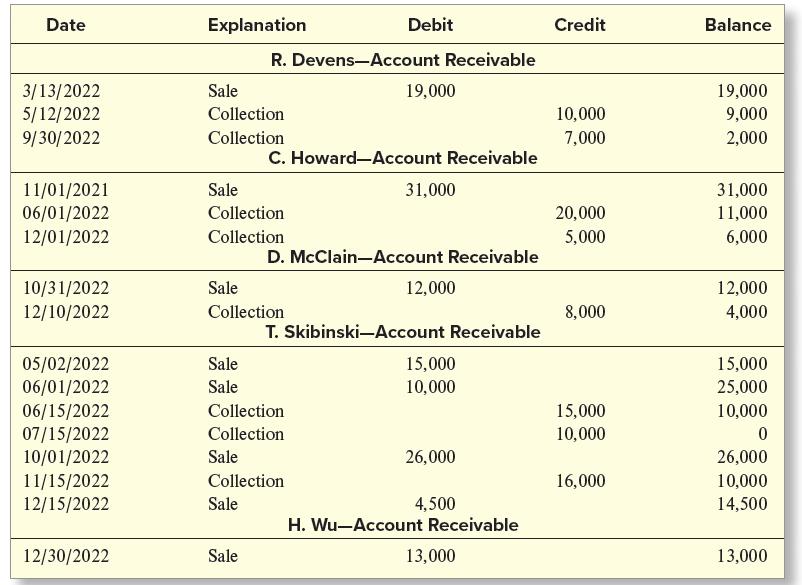Assume that Witz and Steenhoven, Inc. uses the aging approach to estimate bad debt expense at the
Question:
Assume that Witz and Steenhoven, Inc. uses the aging approach to estimate bad debt expense at the end of each accounting year. Credit sales occur frequently on terms n/45. The balance of each account receivable is aged on the basis of four time periods as follows: (1) not yet due, (2) up to 6 months past due, (3) 6 to 12 months past due, and (4) more than 1 year past due. Experience has shown that for each age group, the average loss rate on the amount of the receivable at year-end due to uncollectibility is (a) 1 percent, (b) 5 percent, (c) 20 percent, and (d) 50 percent, respectively. At December 31, 2022 (end of the current accounting year), the Accounts Receivable balance was $39,500 and the Allowance for Doubtful Accounts balance was $1,550 (credit). In determining which accounts have been paid, the company applies collections to the oldest sales first. To simplify, only five customer accounts are used; the details of each on December 31, 2022, follow:

Required:
1. Compute the total accounts receivable in each age category.
2. Compute the estimated uncollectible amount for each age category and in total.
3. Give the adjusting entry for bad debt expense at December 31, 2022.
4. Show how the amounts related to accounts receivable should be presented on the 2022 income statement and balance sheet.
Step by Step Answer:

Financial Accounting
ISBN: 9781264229734
11th Edition
Authors: Robert Libby, Patricia Libby, Frank Hodge





